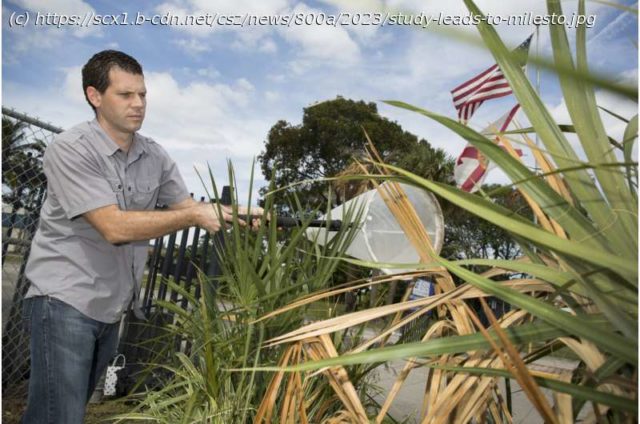Palm trees infected with lethal bronzing disease emit signals that warn nearby healthy palms of the threat. Those healthy palms produce their own defense that University of Florida scientists one day hope to harness to protect palms against the disease.
Palm trees infected with lethal bronzing disease emit signals that warn nearby healthy palms of the threat. Those healthy palms produce their own defense that University of Florida scientists one day hope to harness to protect palms against the disease.
Entomologist Brian Bahder and his team at UF/IFAS Fort Lauderdale Research and Education Center (UF/IFAS FLREC) consider the study’s outcome a turning point for palm disease research because it has high potential for developing management strategies for lethal bronzing, a deadly disease spread by a small insect commonly called a planthopper. This discovery could help manage other palm and plant diseases.
Plants affected by disease or pests can emit small chemical signals, or volatile organic compounds, indicating they are stressed.
Those compounds warn nearby healthy plants. Those healthy plants can activate defense mechanisms—organic compounds of their own—to potentially stave off the pest responsible for the disease.
“Volatile organic compounds are common in plants and play an important role in protecting the plant,” said Bahder. “Most importantly, some of these compounds have antimicrobial properties. They have the potential for use in defending against a variety of different infections in palms and perhaps even other plants.”
“We suspected there was a chemical compound the planthopper was detecting,” said Bahder.






